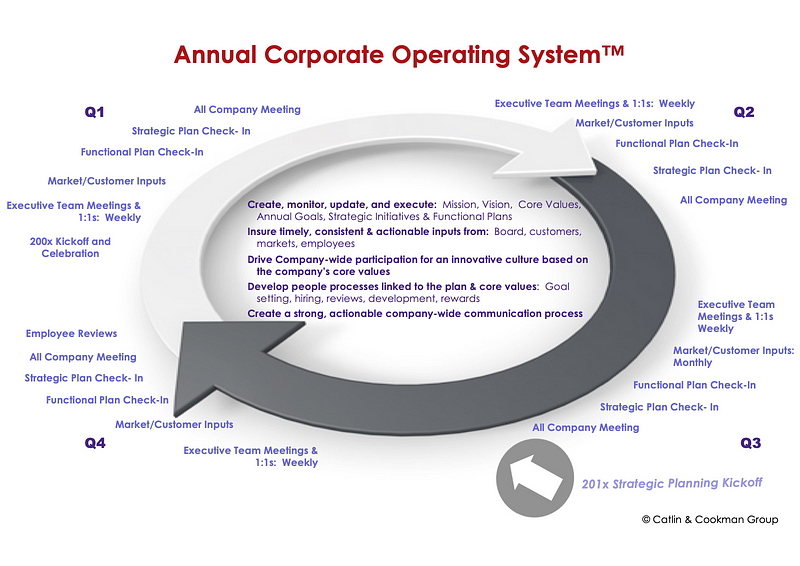About 8-years ago, I boarded a flight from JFK to make my way to an island about 30 miles south of Cape Cod, Massachusetts. It was a welcome break.
I was attending a small, annual, invitation-only gathering of the northeast’s forward-thinking entrepreneurs, venture capitalists, executives, and researchers. The location and name — Nantucket Conference — were fitting. The island started with a partnership of 30 entrepreneurs (tradesman really) and is the inspiration for the Moby Dick saga.
I was approaching my fifth anniversary at the helm of my insurtech company, and I wanted to expose myself to other exciting happenings in the technology industry. I was also looking to rub shoulders with some of the elite leadership of the Boston tech scene. While my company was based just outside of Beantown, I never had the opportunity to enjoy a coffee or break bread with its winners.
The conference held at the Nantucket Yacht Club featured speakers from all walks of life.
One of the most fascinating was a fireside chat, entitled Human 2.0.
The speaker, MIT professor Hugh Herr, the founder of iWalk, a company focused on bringing Biomechatronics to the world. That year, TIME magazine coined him the “Leader of the Bionic Age” because of his revolutionary work in the emerging field of biomechatronics — technology that marries human physiology with electromechanics.
Hugh is a double amputee, the result of a tragic accident. He shared his design for bionic limbs that would allow amputee victims to walk with “normal levels of speed and metabolism as if their legs were biological once again.”
(It reminded me of the “Six Million Dollar Man” series from the late seventies that tells the story of a former astronaut who has superhuman strength due to bionic implants.)
The “something they always remember” moment from the talk was when Hugh, dressed like a GQ model, stands up and breaks away the lower part of his black trousers to reveal his MVP, the BiOM Ankle System — his new bionic legs. (I watched him walk up to the stage, and I had no clue.)
That same weekend, I met someone who would introduce me to a world of CEOs and a system that would become my bionic limbs.
On the last day of the conference, on the lawn just outside the White Elephant Hotel, I met Bouzha Cookman. Since then, nothing has ever been the same.
(She moderated my second favorite talk during the conference, “Leading Toward (and Beyond) the IPO or Acquisition,” which featured a chat with the Michael Simon, founder, and CEO of LogMeIn.)
Bouzha is the founder of one of Boston’s best-kept secrets. She runs the High-Growth CEO Forum® (HGCF). Since 1989, she has brought Boston’s top CEOs together to share their experiences, best practices, and help each other navigate the lonely role of running a high growth company.
Alumni and current members of HGCF lead some of the area’s most successful companies. The forum is operated by Catlin and Cookman Group, a consulting firm she co-founded with her partner Katherine Catlin, author of Leading at the Speed of Growth and Building the Awesome Organization. The firm also provides a suite of consulting services that help CEOs put in place the systems that help fuel the growth of their companies.
Shortly after Nantucket, Bouzha and her team helped me develop our corporate operating system, our strategic plan, and connected me to a network that fueled my professional growth.
Attending the HGCF was like putting on bionic legs for me as I yearned to enhance my skills as CEO. She is a tireless leader of several forums ranging from young venture-backed startups to well known publicly-traded companies.
The first rule of High-Growth CEO Forum, “you don’t talk about the High-Growth CEO Forum.”
(Well, not a sleepless scene from Ed Norton’s Fight Club. But, it is a safe place for CEOs to share their challenges, learn from each other, and grow.)
I get questions about all manner of things from sales & marketing, product, people, and M&A. However, one of the pieces of advice I offer unsolicited to many founders and CEO is the importance of establishing discipline among their teams. I explain how important it is to develop a system that sets the gait and cadence for the company and their leadership.
You need a “corporate operating system” I often advise.
Much like Hugh’s legs, a well designed corporate operating system (COS) can serve as just the bionics your startup needs to fuel its growth.
We caught up with Bouzha during her busy schedule this summer and asked her to share her thoughts on the design of the perfect corporate operating system, among other things.

What experience brought you to develop the High-Growth CEO Forum?
BC: I changed my work focus from senior sales, marketing and product roles in tech companies to help CEOs and their teams build great companies because of my experience with a company from startup through IPO and beyond. I was passionate about the company, the customers, and the ecosystem it served. The same CEO had led for approximately eight years — from pre-revenue through the IPO and into the public markets — an impressive feat. He cared a lot about the people, the culture, the customers, and the business and made that focus clear to all. It was an amazing, wonderful place to work. Then, the company missed its revenue forecast and for that, and probably other reasons, the board decided to change leadership. The company went through downsizing and a major reorganization. It was an extremely negative jolt to the entire ecosystem from customers to employees, to employees families, to the communities they lived in — and I was surprised at the emotional toll it took on me. I started asking the question — who helps and counsels CEOs on their leadership journey purely so they can AVOID what must be predictable pitfalls and challenges as their companies grow? I decided that If I could find a way to help CEOs grow great companies and avoid the downward spiral, that I could contribute to building stronger, positive ecosystems. That led to finding my partner, Katherine Catlin, and has been my purpose and mission for over twenty years in building and leading the High-Growth CEO Forums, delivering our collaborative Building the Profit Spiral Consulting® and coaching practice.
(I benefited greatly from Bouzha’s counsel countless times as she helped me navigate some of the toughest challenges in my journey as CEO.)
What is a corporate operating system?
BC: The annual set of regularly scheduled meetings and activities that provide the overall structure to lead and run the company. It also includes identification of ongoing cross-functional teams and their annual meeting cadence.
Why do CEOs need them?
BC: It is essential to supporting/creating corporate growth. COS allows teams to create, monitor, update, and execute their annual goals, strategic initiatives, and functional plans as well as stay focused on their mission and core values. COS also ensure timely, consistent & actionable inputs from the board, customers, markets, and employees. They drive company-wide participation for an innovative culture based on the company’s core values by creating a strong, actionable company-wide communication process.

How do some of the best companies and CEO leverage the COS?
BC: Number one, they make sure they are sticking with it religiously. For example, it is very easy to let fire-fighting get in the way of going off-site to take the time to think about working on the business versus in the business; or to let travel to an important customer lead to missing a weekly 1:1 with a key executive. The CEO has to be in charge of the operating system, but they don’t have to do everything associated with it. The best companies and CEOs understand how to leverage and grow it to keep their companies aligned, agile, and growth-oriented. As companies get larger, the best CEOs build in additional capacity and make appropriate changes to the COS to incorporate increasing complexity and size. For example, when companies are small, everyone knows everyone. Communication is relatively easy. It is pretty clear what each team member and employee is responsible for. It is much harder to achieve that clarity when the number of employees starts to grow.
Does a company need to have a strategic plan before forming one?
BC: No, the company can set up the Operating System structure and then use that structure to develop, monitor, communicate, and reset the strategic plan and what we call the Foundations for Growth on an ongoing basis. The operating system is designed to help the company meet its growth objectives, build its culture, and to align the organization to execute. The critical items to establish are annual and quarterly corporate goals, Core Values, and the Core Purpose/Mission and a 2–3 year envisioned future state for the company.
What is the best way to start?
BC: I recommend that the CEO and team work together to decide what is needed for their company given its stage and size — and be very deliberate about designing it and making sure the appropriate meetings are in the calendar and develop clarity around who should be meeting and when. For example, when companies are small, they may need to have daily stand-up meetings just to stay coordinated and on target. That would be a place to start. They should also create a regular monthly meeting to step back and think more strategically. The CEO should have regularly scheduled 1:1s with his/her key team members. As teams grow, weekly team meetings become critical. It is also important to allocate time to creating the next year’s plan in conjunction with the budgeting process — in a collaborative, iterative process.
What are the components of a good one?
BC: Here, let me show you our annual corporate operating system template.

What are some of the most common reasons CEOs shy away from a COS?
BC: Sometimes CEOs have never really heard of the concept so just don’t think about it. Often the reason is a fear it will add too much structure, and it will stifle creativity and innovation. That’s usually what I hear. Certainly, you can go too far with detailed processes, but that’s not what I’m suggesting. What I’m suggesting is putting a structure in place so that the organization stays aligned. People know when they’re going to meet and what they’re going to be talking about. It’s about keeping them on track to deliver on their goals. It is about building accountability. People have to be held accountable for what it is they say they’re going to deliver. I also hear CEOs say that because they’re really small they don’t need it, but if you don’t start thinking about an operating system early, it will be very hard to “inject” into the organization later.
When should a CEO launch a COS?
BC: It is always important to be deliberate and thoughtful about purpose, frequency and topics for meetings and interaction. When there are two founders, they don’t need an official COS, but they should discuss and agree on how they want to structure their interaction. As more employees get added the need for a formal COS grows. It certainly is necessary once a company has a formal management team and those team members are beginning to hire direct reports. On that topic, I strongly advise that early on when you’re building a company, you think about your core values and you write those down. Because when you start hiring, you want to be sure you’re hiring for those values and building the kind of company that you want. This is something you can do early on in addition to your business plan and go-to-market strategy. As you start to build your team, and as the executive, management, and leadership teams grow, you’ll need team meetings and leadership meetings in addition to 1:1, and so on. Operating Systems are really tied to the growth of the company and as a company gets bigger, it’s really important to be proactive about implementing and evolving them.
What plays would you recommend to first time CEOs?
BC: Recognize that a COS is a critical lever to be an effective CEO! Make sure to create the foundational elements to support growth, accountability and company alignment. The COS will help you do that. Create and write down your values, your vision, and mission. Minimize title inflation. In small companies people want to have big titles. If you give people the big titles, it will be difficult to bring in the people you might need later. People can be promoted over time, or you can bring people in over them that they can learn from. And, of course, always be thinking about organization, think about if it’s making sense and if it’s what you need for the next eighteen months. Don’t be afraid that a COS will stifle innovation — in fact, it will enhance it and it will keep your company aligned and agile.
Conclusion
I am grateful to have made that trip nearly a decade ago.
No matter where you are in your company’s journey — from startup to IPO stage — there will be times when you feel like your legs have been cut off.
Take it from me; having the right systems and network in place can be the difference between human and superhuman recovery.
Don’t wait too long to get those systems in place.
When you do, it will feel like CEO 2.0.


